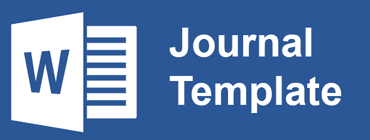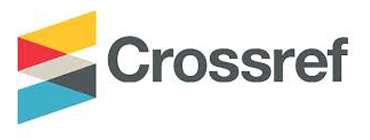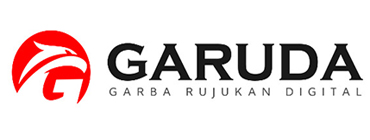E-LEARNING BASED IN ARABIC LANGUAGE COURSE IN HIGHER EDUCATION: POLICY AND IMPLEMENTATION STUDIES
Abstract
Full Text:
PDFReferences
Aidah. S. (2019). Pemanfaatan E-Learning sebagai Media Pembelajaran di STIA Al Gazali Barru (Suatu Studi terhadap Pemanfaatan Model E-Learning Berbasis Software Claroline). Meraja Journal, 2(1), 1–12. https://merajajournal.com/index.php/mrj/article/view/20/17
Asdari, A., Nisa’, M., Hady, Y., & Kasyful Anwar, A. W. (2022). Optimalisasi Pembelajaran Bahasa Arab Di Masa Covid-19 Melalui E-Learning Pada Prodi Non Bahasa Arab. Arabi : Journal of Arabic Studies, 7(1), 93–108. https://doi.org/10.24865/ajas.v7i1.457
Ayu, M. (2020). Online Learning: Leading E-Learning At Higher Education. Journal of English Literacy Education, 7(1), 47–54.
Aziz, A. (2020). Penggunaan E-Learning Sebagai Media Dalam Proses Belajar Bahasa Inggris Di Universitas Darwan Ali Sampit. Widya Wacana: Jurnal Ilmiah, 15(1), 11–17. https://doi.org/10.33061/j.w.wacana.v15i1.3514
Chandrawati, S. R. (2010). Pemamfaatan E-Learning Dalam Pembelajaran. Jurnal Cakrawala Kependidikan, 8(2), 172–181.
Elcullada Encarnacion, R., Galang, A. A., & Hallar, B. J. (2021). The Impact and Effectiveness of E-Learning on Teaching and Learning. International Journal of Computing Sciences Research, 5(1), 383–397. https://doi.org/10.25147/ijcsr.2017.001.1.47
Hadi Elyas, A. (2018). Penggunaan Model Pembelajaran E-Learning Dalam Meningkatkan Kualitas Pembelajaran. Jurnal Warta, 56(04), 1–11. https://jurnal.dharmawangsa.ac.id/index.php/juwarta/article/view/4
Hasan, Y. H., Zaini, A. R., & ... (2020). التدخل اللغوي لدى طلبة المدارس الثانوية الماليزية في مسابقة صناعة الأفلام القصيرة الناطقة بالعربية: Language interference effect among students of Malaysia …. Al-Irsyad: Journal of Islamic …. http://al-irsyad.kuis.edu.my/index.php/alirsyad/article/view/72
Kartika, Devia, Kurnia, H. (2022). Penerapan E-Learning Sebagai Media Pembelajaran Dalam Menghadapi Pandemi Covid -19. J-COSCIS : Journal of Computer Science Community Service, 2(1), 15–24.
Magdalena, I., Andriyanto, A., & Refaldi, R. R. (2020). Pemanfaatan Media Pembelajaran E-Learning Menggunakan Whatsapp sebagai Solusi di Tengah Penyebaran Covid-19 di SDN Gembong 1. As-Sabiqun, 2(2), 1–16. https://doi.org/10.36088/assabiqun.v2i2.998
Masdin. (2008). Konsep Dasar Analisis Kebijakan Pendidikan Tinggi. Shaut Al Arabiyyah, 21(XIV).
Mun’im, A., Oktafia, R., & Churrahman, T. (2020). Reward and Punishment to Motivate Performance in Islamic Perspective. Conference of Management of Islamic Education Leadership in The Era of Revolution 4.0. https://doi.org/https://doi.org/10.21070/icecrs2020375
Nasucha, M. R., Fikri, M., Rapsjani, A., Mareta, D., Puspitasari, A., & Malang, U. M. (2021). Urgensi Penerapan Prinsip Manajemen Modern pada Lembaga Pendidikan. Pandawa: Jurnal Pendidikan Dan Dakwah, 3(3), 303–317.
Pangestu, A., & Abdul Majid, N. W. (2021). Peran E-Learning Sebagai Media Pembelajaran Di Smkn 3 Kuningan. Journal Fascho in Education Conference-Proceedings, 2(1). https://doi.org/10.54626/proceedings.v2i1.107
Salam, M. Y., & Mudinilllah, A. (2022). Zoom Meet: Alternative Media for Supporting Arabic Language Learning During the Pandemic. Arabi : Journal of Arabic Studies, 7(1), 13–24. https://doi.org/10.24865/ajas.v7i1.404
Sayekti, R. dkk. (2019). Panduan E-Learning UIN Sumatera Utara. UIN Sumatear Utara.
Seli, S., Thamrin, L., & Nurdini, A. (2023). SPMI Sebagai Penjamin Total Quality Management Institusi. Jurnal Penjaminan Mutu, 9(1), 71–79. https://doi.org/http://ojs.uhnsugriwa.ac.id/index.php/JPM
Septiani, E. (2018). Pemanfaatan E-Learning Dalam Pembelajaran Bahasa dan Sastra Indonesia. Prosiding Pekan Seminar Nasional (Pesona), 92–98.
Setiawan, H., Rinamurti, M., & Augustine, M. (2021). Pengaruh Penggunaan Media E-Learning dan Transfer Pengetahuan dalam Kuliah Daring/Online Selama Pandemi Covid-19 Terhadap Kinerja Dosen Tetap Unika Musi Charitas. SAINTEK : Jurnal Ilmiah Sains Dan Teknologi Industri, 5(1), 11–20. https://doi.org/10.32524/saintek.v5i1.249
Solimando, C. (2022). E-Learning and Arabic in the Age of Covid-19: Rethinking the Learning of Vocabulary. In Altre Modernita (Issue 27, pp. 166–180). https://doi.org/10.54103/2035-7680/17884
Susanto, S. (2014). Strategi Menuju World Class University (Wcu) Pada Universitas Semarang. Jurnal Transformatika, 11(2), 86. https://doi.org/10.26623/transformatika.v11i2.100
Syarhani, S. (2022). Manajemen Pendidikan Islam, Konsep, Fungsi Dan Prinsip. Al Qalam: Jurnal Ilmiah Keagamaan Dan Kemasyarakatan, 16(6), 2007. https://doi.org/10.35931/aq.v16i6.1258
Tim Penyusun. (2022a). Buku Panduan Akademik FITK UIN SU Medan 2022/2023. UIN SU Press.
Tim Penyusun. (2022b). Buku Panduan Akademik UIN SU Medan TA. 2022-2023. UIN SU Press.
Z.A. Hasibuan dan H.B. Santoso. (2005). The use of e-learning towards new learning paradigm: case study student centered e-learning environment at Faculty of Computer Science - University of Indonesia.
Zubaidah, Kardena, A., Shalihah, S., Hodijah, O., Afrida, Y., & Safitri, L. (2021). Web-based e-learning Application for learning Arabic language. Journal of Physics: Conference Series, 1779(1), 0–9. https://doi.org/10.1088/1742-6596/1779/1/012011
DOI: http://dx.doi.org/10.30829/tar.v30i2.2921
Refbacks
- There are currently no refbacks.

Jurnal Tarbiyah by UIN Sumatera Utara Medan is licensed under a Creative Commons Attribution-NonCommercial-ShareAlike 4.0 International License.
Based on a work at http://jurnaltarbiyah.uinsu.ac.id/index.php/tarbiyah.
Permissions beyond the scope of this license may be available at http://jurnaltarbiyah.uinsu.ac.id/index.php/tarbiyah/about/submissions#copyrightNotice.
















